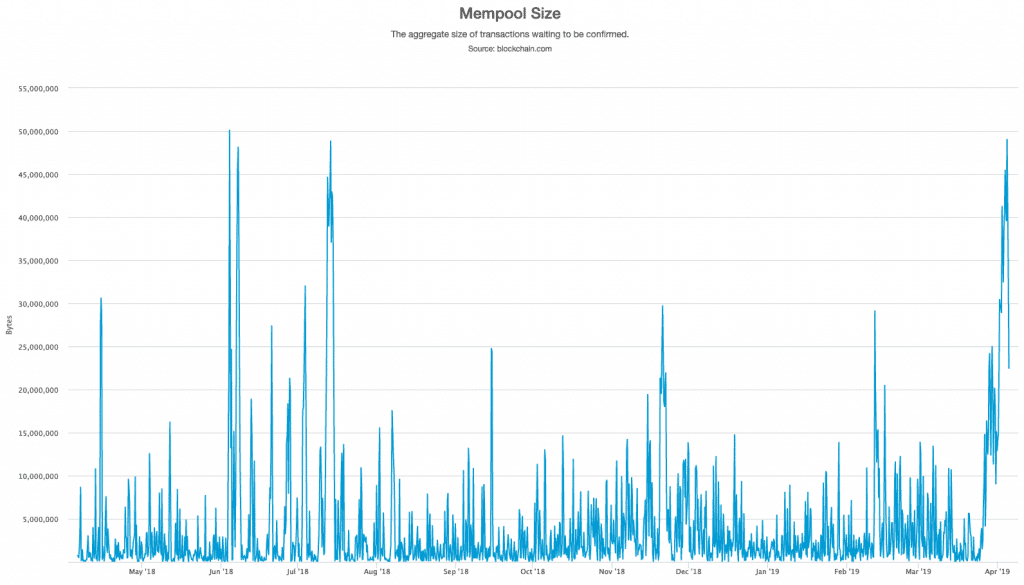The Bitcoin Mempool – A Beginner’s Explanation
By: Alexander Reed | Last updated: 1/5/24
If you’ve been into Bitcoin long enough, you may have heard the term “Mempool” being thrown around. In this post, I’ll explain exactly what the Mempool is and why it’s important.
Bitcoin Mempool Summary
The Mempool is a “waiting area” for Bitcoin transactions that each full node maintains for itself. After a transaction is verified by a node, it waits inside the Mempool until it’s picked up by a Bitcoin miner and inserted into a block.
That’s the Bitcoin mempool in a nutshell. If you want a more detailed explanation about the Mempool, keep on reading. Here’s what I’ll cover:
- Mempool Explained
- Mempool Management
- The Importance of the Mempool
- Frequently Asked Questions
- Conclusion
1. Mempool Explained
Before we begin, here’s a short and important video about how Bitcoin transactions get confirmed:
When a Bitcoin transaction is transmitted to the network, it first gets verified by all of the Bitcoin nodes available (i.e. computers participating in the Bitcoin network).
After it successfully passes verification by a node, it sits inside that node’s “Unconfirmed Transactions” area called the “Mempool” (short for Memory Pool). The transaction patiently waits until a miner picks it up and includes it in the next block.
The Mempool is basically the node’s holding area for all the pending transactions.
Each node has a different capacity for storing unconfirmed transactions. As a result, each node has its own version of the pending transactions. This explains the variety of Mempool sizes & transaction counts found in different sources.
2. Mempool Management
You may be wondering: how do nodes keep from crashing due to overload of pending transactions in the Mempool?
The answer is simple. Once the Mempool reaches full capacity, the nodes start prioritizing transactions by setting up a minimal transaction fee threshold.
Transactions with a fee-rate lower than the threshold are immediately removed from the Mempool and only new transactions with a large enough fee are allowed access to the Mempool.
3. The Importance of the Mempool
The Mempool is part of BIP 35 (Bitcoin Improvement Proposal No.35). The idea was that outside nodes would be able to access other nodes’ Mempool. This is useful for several cases:
- SPV clients (also known as lite wallets), wishing to know about transactions before they were confirmed and entered into a block.
- Miners who want to check for lucrative fees or download the current “transaction waiting list” in order to start confirming transactions.
- Remote network diagnostics.
The Mempool is the “waiting room” of the Bitcoin network. The faster transactions are cleared from it and added into blocks on the Blockchain, the better experience users will get.
In other words, if new transactions arrive at a higher rate than they are cleared from the mempool into blocks, a “traffic jam” will occur and transactions can take a long time to get approved (depending on their size and attached fee).
When a node receives the latest mined block from the miner, it removes all the transactions contained in this block from its mempool. This results in a sharp drop in the Mempool size.
If you want to see the current status on the Mempool you can take a look at this graph
If, for example, the Mempool size is around 3MB then most transactions will have to wait at least one or two blocks until they get confirmed. This is because each block is 1MB in size, so it can take up to 3 confirmations to clear the whole mempool (assuming no new transactions are coming in).
Keep in mind that some of the Mempool transactions are low priority transactions that their sender knows they will take a long time to be confirmed – for example “dust transactions” (sending really small amounts of Bitcoin).
4. Frequently Asked Questions
How Long Does it Take to Confirm a Bitcoin Transaction?
On average a new block of Bitcoin transactions is mined every 10 minutes. This is an average, meaning it could take 1 minute or 1 hour as well. Each block holds a few thousand transactions.
Depending on the fee you’ve attached to your transaction you’ll be able to estimate how long it will take your transaction to get confirmed (again, on average).
You can use this page to see how much of a fee you need to attach to get confirmed within a certain amount of time.
What Should I Do If My Transaction is Stuck in the Mempool?
As a rule of thumb, if you wait long enough (usually around 48 hours) your transaction will drop from all of the Bitcoin mempools and the funds will be returned to your wallet.
However, here are some other things you can do to expedite transaction confirmation:
- Use Replace By Fee (RBF) – Some wallets (e.g. Electrum) will allow you to replace an existing transaction with a new one with a higher fee.
- Use transaction accelerators – Some mining pools supply a service of accelerating specific transactions for a fee or on a first come first serve basis.
5. Conclusion
The Mempool is a very important part of the Bitcoin network. It allows us to understand how crowded the network is and if there are “transaction traffic jams” which result in slower confirmation times and higher fees.
Got more questions about the Mempool? Leave the in the comment section below!




I have unconfirmed sitting in my bitcoin account how do I get it confirmed
Hi Roy, when a Bitcoin transaction is made, it needs to be confirmed by the network before it can be considered valid. Confirmation is the process by which other nodes in the network verify that the transaction is valid and add it to the blockchain, which is a public ledger of all Bitcoin transactions. It’s also important to note that once a transaction is broadcast, it cannot be canceled or reversed. If your transaction remains unconfirmed for an extended period, it may eventually be dropped from the network and the funds will be returned to your account.
Are you get your transaction back???
***Contract, I am new to cryptocurrency I recently downloaded the Bitcoin app from Play Store Google on my Samsung Android I had once a money on a gaming site I had it transferred so I thought to a Bitcoin wallet I can see my money in the mempool how do I transfer the money out of the mempool to my Bitcoin wallet
I am totally new to cryptocurrency. On December 27 2022 I had opened a bitcoin app and from a gaming site transferred into a bitcoin wallet so I thought.my money is in mempool and I can see it..how do I get I into my bitcoin wallet?
Good explanation to a neophyte. Thank you.
Was sent $55k to my wallet but didn’t see anything, and tried to withdraw was sent a message to my mail that my transaction entered mempool
So I sent a small transaction for $10 this morning from one wallet to another. It was around 3am. The Mempool showns “Total Received” 0.00017978 , but “Total Sent” 0.000000. Then “Balance” $9.90. Does this mean its still pending processing? Or pending to be sent? Or is it stuck?
This could simply be a case of the payment still pending. Give it a day or two to see what happens. If nothing changes by then, it might be a good idea to reach out to the pool administrator and see if they can get involved.
Im having the exact same issue!
Did you find a resolution to this problem ? I am having the same issue 🤯😤😭
**funds being received, zero sent, funds as balance***
**confirmed transaction**
How long ago did you engage in this transaction? We’ve been hearing about this a lot with trading platforms – they take forever to process transactions. Try giving it a few more days and if there is no success, try getting in touch with the platform to see if they can give you any additional information about what the holdup may be.
How long does it takes footy before it was confirmed because am currently in the same problem 3 days now